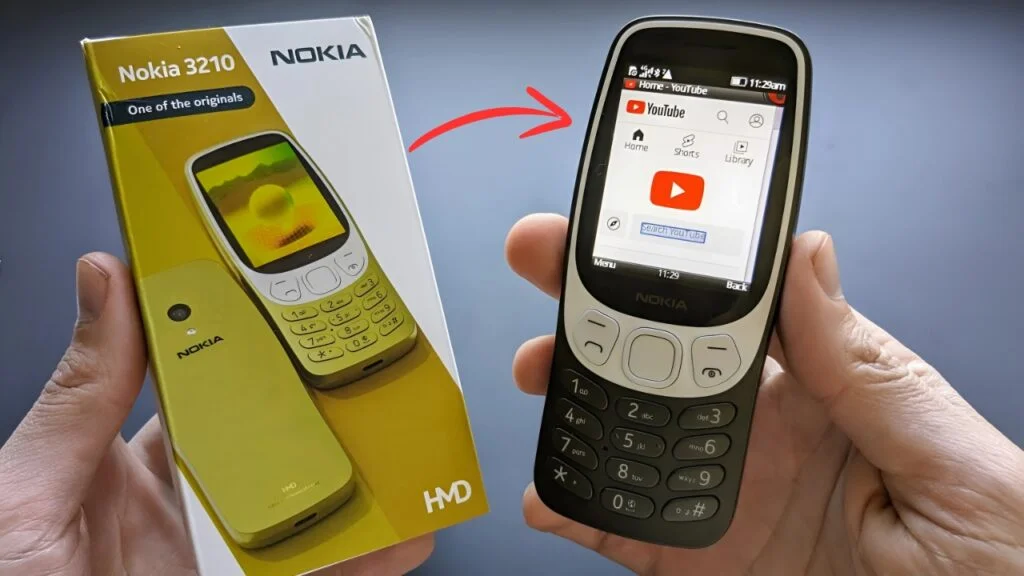Nokia is making waves again — but is it a triumphant return or a doomed attempt to chase nostalgia? The revived Nokia 3210 has sparked curiosity and skepticism alike. Below, you’ll find everything you need to know: its design, features, strengths, drawbacks, and where it may stand in today’s smartphone-driven world.
A Classic Reborn — But How Far?
The new Nokia 3210 design leans heavily on the original. Its compact body, tactile keypad, and unmistakable curves are clearly meant to evoke the early 2000s icon. But while it retains that retro soul, it also adds modern touches like a more durable shell and modest upgrades under the hood.
That said, the look is more “refreshed nostalgia” than a full reinvention.
Display & Interface: Simple, But Limited
The screen is basic — just enough to support the essentials: calls, texts, menus, and simple apps. It’s not going to compete with modern smartphones in terms of resolution, brightness, or size. What it offers instead is minimalism: no distractions, no over-the-top features, just the core functions you expect from a feature phone.
The interface follows suit: straightforward menus, easy navigation, and a lean set of applications. If your priority is simplicity over bells and whistles, the 3210 delivers.
Power & Battery Life: One of Its Strengths
One area where this reboot leans into nostalgia for practical reasons is battery. Because its energy demands are modest (no 4K video, no heavy multitasking), the battery can last far longer than in most smartphones. You won’t be charging it twice a day — a major selling point if you prioritize longevity over performance.
However, battery life in real-world use will depend on network strength, radio usage, and how often you’re using extras like Bluetooth or FM.
Features & Connectivity
While the Nokia 3210 is primarily a feature phone, it does attempt to bridge the gap to modern expectations. Key features include:
- Dual-SIM capability
- 4G connectivity (in many versions)
- Bluetooth, FM radio, MP3 player
- Camera (usually modest in resolution)
- USB / other basic port support
These features are enough to keep you connected and functional, but don’t expect flagship-tier performance or camera quality.
Strengths: What It Gets Right
- Simplicity & Reliability — For users tired of constant notifications, updates, and overcomplicated OS baggage, the 3210 is a breath of fresh air.
- Enduring battery — Because its demands are light, the phone can last days (not hours) on a single charge.
- Durability — Phones of this class tend to be rugged and less fragile than sleek slab smartphones.
- Affordability — You aren’t paying for features you won’t use; it’s intended to be cost-conscious.
Weaknesses & Risks: Why It Might Be Seen as a Failed Project
- Too basic for many users: For people used to streaming, multitasking, high-resolution displays, or gaming, the 3210 might feel like a step backward.
- Camera & multimedia limitations: Expect low resolution, limited video, and modest audio support.
- App ecosystem constraints: It won’t run big apps or sophisticated software — think simple utilities only.
- Balancing nostalgia with utility: If the retro appeal isn’t strong enough, many will see it as underpowered rather than charming.
- Competition from cheap smartphones: Even low-end Android phones now offer powerful features for relatively low cost.
So — Return or Failure?
That really depends on who you ask. If your definition of success is a useful, minimalist alternative to modern phones, then the Nokia 3210 might be a modest return. It’s a niche product: not built to compete with flagships, but to coexist with them.
On the other hand, if success means broad commercial impact or redefining what a phone should be in 2025, then it risks being a curiosity or niche gadget — interesting, but ultimately sidelined.

